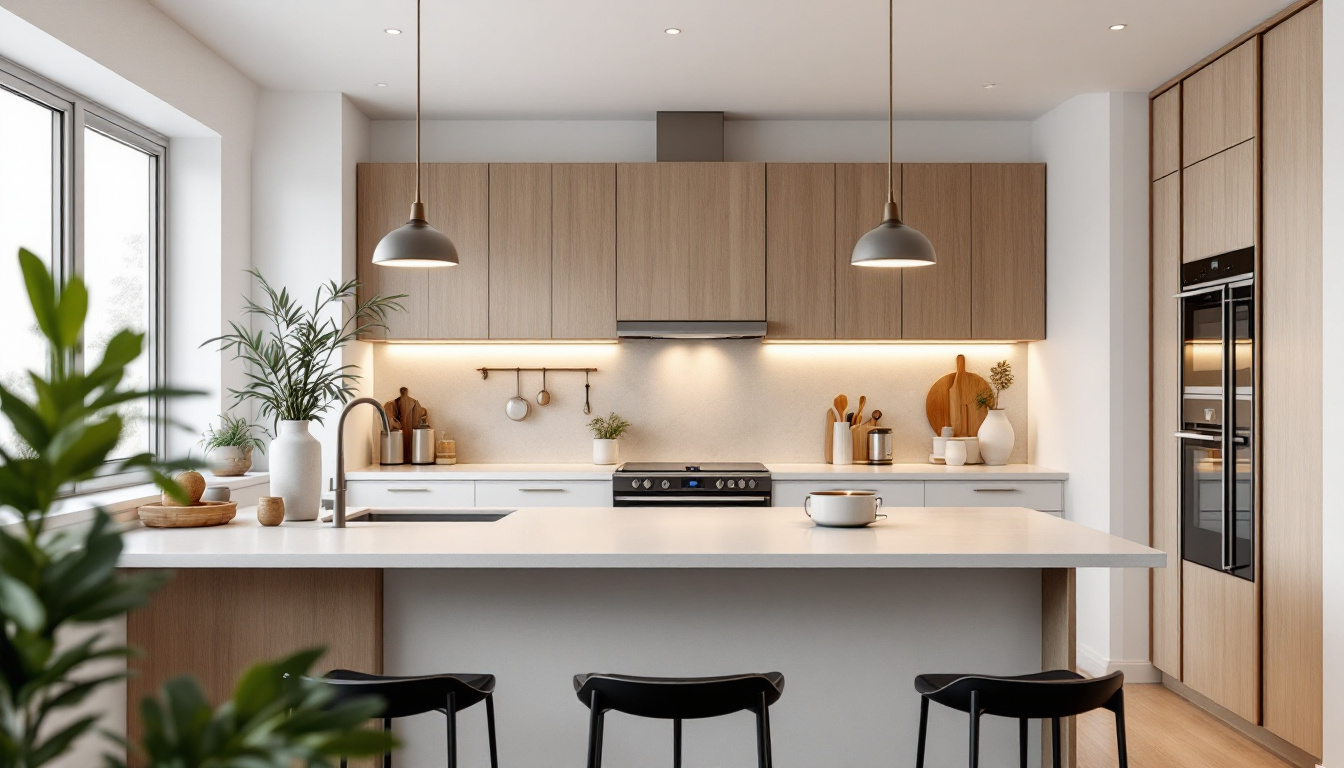
Lighting plays a crucial role in enhancing the aesthetics and functionality of any space. For lighting contractors, understanding the nuances of ceiling lights is essential to delivering exceptional results for clients. This article serves as a comprehensive guide to ceiling light stores, covering everything from types of ceiling lights to installation tips and trends in the industry.
Ceiling lights come in various styles, each serving a unique purpose and offering distinct benefits. Understanding these types can help contractors make informed decisions when selecting fixtures for their projects.
Flush mount lights are a popular choice for spaces with low ceilings. These fixtures sit directly against the ceiling, providing ample illumination without taking up valuable vertical space. They are available in various designs, from simple and utilitarian to ornate and decorative, making them versatile for different interior styles.
When choosing flush mount lights, consider the wattage and lumens to ensure adequate brightness for the intended space. Additionally, energy-efficient options, such as LED flush mounts, are increasingly preferred for their longevity and lower energy consumption. Many flush mounts also come with dimmable features, allowing homeowners to adjust the ambiance according to their needs, whether it’s a bright light for tasks or a softer glow for relaxation.
Pendant lights are suspended from the ceiling by a cord, chain, or rod, making them ideal for areas where focused lighting is needed, such as over kitchen islands or dining tables. They come in various shapes and sizes, allowing for creative design possibilities.
Contractors should pay attention to the height at which pendant lights are installed, ensuring they provide adequate illumination without obstructing views or movement. Using multiple pendants in a row can create a striking visual effect while enhancing functionality. Furthermore, pendant lights can be an excellent opportunity to introduce color and texture into a room, as they are available in materials ranging from glass and metal to fabric and wood, allowing for a wide array of design aesthetics that can complement or contrast with existing decor.
Chandeliers are synonymous with elegance and sophistication. These multi-armed fixtures can serve as a statement piece in dining rooms, entryways, or grand living spaces. While traditionally associated with classic decor, modern chandeliers come in various styles, including minimalist and industrial.
When selecting a chandelier, consider the scale of the room and the height of the ceiling. A well-proportioned chandelier can enhance the overall design, while one that is too large or small can throw off the balance of the space. Additionally, chandeliers can vary significantly in terms of light source; some utilize incandescent bulbs, while others are designed for energy-efficient LEDs or even smart lighting options that can be controlled via smartphone apps. This versatility not only adds to the aesthetic appeal but also allows for customization of lighting settings to suit different occasions, from intimate dinners to festive gatherings.
Selecting the appropriate ceiling light involves several considerations, from the function of the space to the desired ambiance. Contractors must assess these factors to provide clients with the best lighting solutions.
Before choosing a ceiling light, it is essential to evaluate the specific requirements of the space. For example, a kitchen may require brighter, more focused lighting for cooking tasks, while a bedroom might benefit from softer, ambient lighting for relaxation.
Additionally, consider the layout and size of the room. Larger spaces may require multiple fixtures to ensure even illumination, while smaller rooms might be adequately served by a single, well-placed light. It’s also crucial to think about the height of the ceiling; higher ceilings can accommodate larger fixtures that create a dramatic effect, while lower ceilings may benefit from flush mounts or semi-flush designs that keep the space feeling open and airy.
The style of the ceiling light should complement the overall design theme of the space. For instance, a modern minimalist room may benefit from sleek, simple fixtures, while a traditional space might call for more ornate designs.
Contractors should also consider the color scheme and materials used in the room. A cohesive look can be achieved by matching the ceiling light with other elements, such as furniture and decor. For example, a brass fixture can add warmth to a room with wooden accents, while a chrome light might enhance a contemporary space with glass elements. Furthermore, incorporating different textures can add depth to the design; a woven pendant light can introduce an organic feel, while a glass chandelier can bring sophistication and elegance.
With growing awareness of environmental issues, energy efficiency has become a significant consideration in lighting design. Many clients are now looking for sustainable options that reduce energy consumption and lower utility bills.
LED ceiling lights are an excellent choice for energy-efficient lighting. They consume significantly less energy than traditional incandescent bulbs and have a longer lifespan, making them a cost-effective solution in the long run. Additionally, many LED options now come with adjustable brightness and color temperature settings, allowing homeowners to customize their lighting to suit different activities or moods. This versatility not only enhances functionality but also contributes to a more sustainable lifestyle by reducing the need for multiple lighting fixtures in a single space.
Proper installation is crucial for ensuring the safety and functionality of ceiling lights. Contractors should follow best practices to achieve optimal results and avoid common pitfalls.
Before beginning the installation process, it is essential to ensure that the electrical system can support the new fixtures. This includes checking the circuit capacity and ensuring that the wiring is up to code.
When installing ceiling lights, always turn off the power at the circuit breaker to prevent accidents. Using a voltage tester can provide additional safety assurance before handling any electrical connections.
It’s also advisable to review the manufacturer’s specifications for the ceiling light fixture, as these documents often contain important information regarding wattage limits and installation requirements. If you’re unsure about the existing wiring or circuit load, consulting with a licensed electrician can help prevent potential hazards and ensure compliance with local electrical codes.
Different types of ceiling lights require various mounting techniques. flush mounts typically involve securing the fixture directly to the ceiling, while pendant lights may require additional hardware for suspension.
For heavier fixtures, such as chandeliers, ensure that the mounting bracket is securely anchored to a ceiling joist or support structure. This is vital for preventing accidents and ensuring the longevity of the installation.
Additionally, consider the aesthetic impact of the mounting technique. For instance, using a decorative canopy can enhance the visual appeal of pendant lights, while ensuring that the fixture is at the right height to provide adequate illumination without obstructing views or creating glare. Always take into account the room’s dimensions and ceiling height when determining the best mounting approach.
Once the installation is complete, it is essential to test the lights to ensure they function correctly. Check for any flickering or dimming, which may indicate issues with the electrical connections.
Adjust the positioning of pendant lights or chandeliers, if necessary, to achieve the desired height and alignment. Properly positioned fixtures can enhance the overall aesthetic and functionality of the space.
Moreover, consider the color temperature of the bulbs used in the fixtures, as this can significantly affect the ambiance of the room. Warmer tones can create a cozy atmosphere, while cooler tones may be more suitable for task-oriented spaces like kitchens or home offices. Experimenting with different bulb types and wattages can help you find the perfect balance of light and mood for your environment.
Smart lighting technology has gained popularity in recent years, allowing homeowners to control their lighting remotely via smartphones or voice-activated devices. This trend is transforming the way people interact with their home lighting systems.
Contractors can enhance their service offerings by incorporating smart ceiling lights into their designs. These fixtures can provide customizable lighting options, allowing clients to adjust brightness and color temperature based on their preferences and activities.
Incorporating mixed materials and textures into ceiling light designs is another emerging trend. Combining metal, glass, wood, and fabric can create visually striking fixtures that add depth and character to a space.
Contractors should consider how these materials can complement existing decor while introducing a fresh, modern aesthetic. Unique combinations can make ceiling lights a focal point in any room.
Minimalism continues to influence lighting design, with a focus on clean lines and simple forms. Geometric shapes are particularly popular, offering a contemporary look that can suit various interior styles.
Contractors should explore minimalist ceiling light options that provide functionality without overwhelming the space. These designs often emphasize the beauty of simplicity, allowing other elements in the room to shine.
Understanding the intricacies of ceiling lights is essential for lighting contractors aiming to deliver exceptional service to their clients. By familiarizing themselves with the various types of ceiling lights, installation techniques, and current trends, contractors can make informed decisions that enhance the overall design and functionality of a space.
Whether it’s choosing the right fixture for a specific room or incorporating smart technology into designs, the knowledge gained from this guide can empower contractors to elevate their projects and exceed client expectations. As the lighting industry continues to evolve, staying informed and adaptable will be key to success in this dynamic field.
Ready to enhance your lighting projects with the highest quality ceiling lights at unbeatable prices? Look no further than LumenWholesale. Our spec-grade lighting selection is designed to meet the needs of the most discerning contractors, offering reliability and high performance for any project. Say goodbye to inflated markups and hello to hassle-free bulk buying with free shipping. Elevate your lighting solutions today and experience the best value in wholesale lighting. Discover our collection and start saving now.

Discover the must-have tools and techniques for lighting contractors working with solar lantern walls.

Discover essential tips and expert advice for lighting contractors on mastering the installation and optimization of LED surface-mounted lights.

Discover the ultimate guide to flush mount kitchen lights tailored for lighting contractors.

Discover how low price grow lights are revolutionizing the lighting industry by making indoor gardening more accessible and sustainable.